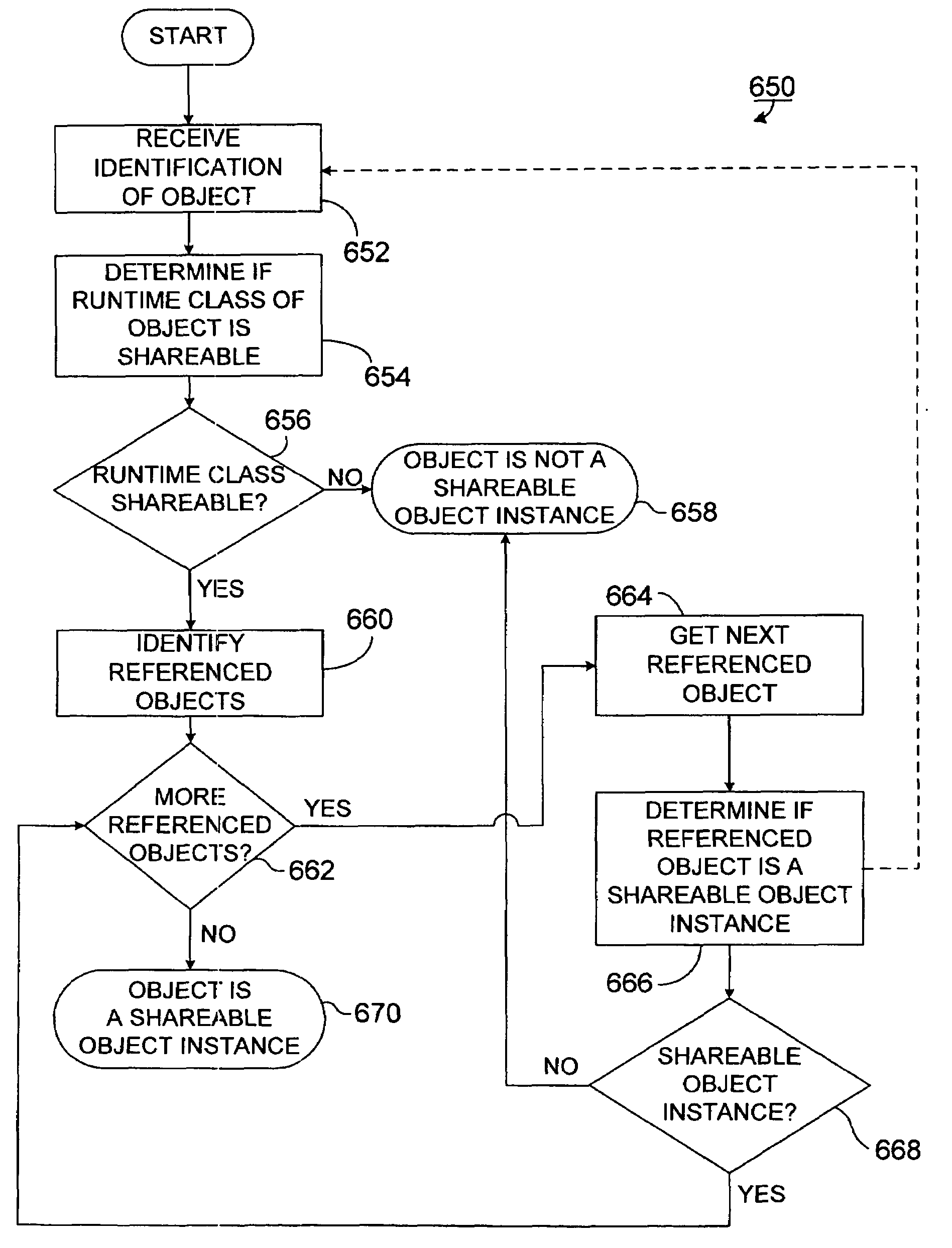Sharing objects in runtime systems
a runtime system and object technology, applied in the field of data processing, can solve problems such as difficult to achieve and unpractical approaches, and achieve the effects of reducing resource consumption, less memory, and less tim
- Summary
- Abstract
- Description
- Claims
- Application Information
AI Technical Summary
Benefits of technology
Problems solved by technology
Method used
Image
Examples
Embodiment Construction
[0082]Isolating User Sessions
[0083]FIG. 1 illustrates a client / server system 100 in which a network 150 links a server 200 to client systems 102, 104, 106. The server 200 is a programmable data processing system suitable for implementing apparatus, programs, or methods in accordance with the invention. The server 200 provides a core operating environment for one or more runtime systems that process user requests. The server 200 includes a processor 202 and a memory 250. The memory 250 can be used to store an operating system, a Transmission Control Protocol / Internet Protocol (TCP / IP) stack for communicating over the network 150, and machine-executable instructions executed by the processor 202. In some implementations, the server 200 can include multiple processors, each of which can be used to execute machine-executable instructions. The memory 250 can include a shared memory area 255 (shown in subsequent figures) that is accessible by multiple operating system processes executing ...
PUM
 Login to View More
Login to View More Abstract
Description
Claims
Application Information
 Login to View More
Login to View More - R&D
- Intellectual Property
- Life Sciences
- Materials
- Tech Scout
- Unparalleled Data Quality
- Higher Quality Content
- 60% Fewer Hallucinations
Browse by: Latest US Patents, China's latest patents, Technical Efficacy Thesaurus, Application Domain, Technology Topic, Popular Technical Reports.
© 2025 PatSnap. All rights reserved.Legal|Privacy policy|Modern Slavery Act Transparency Statement|Sitemap|About US| Contact US: help@patsnap.com



